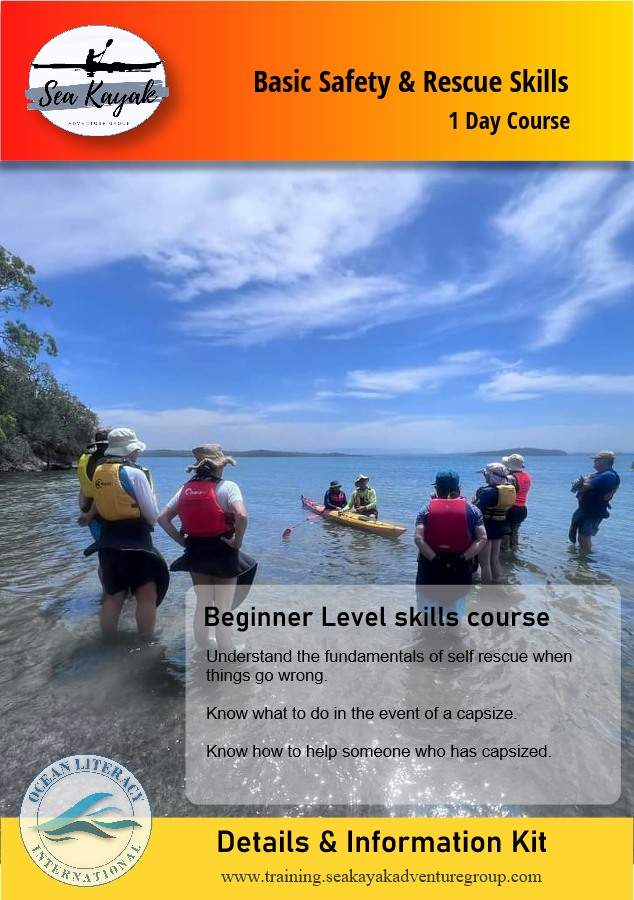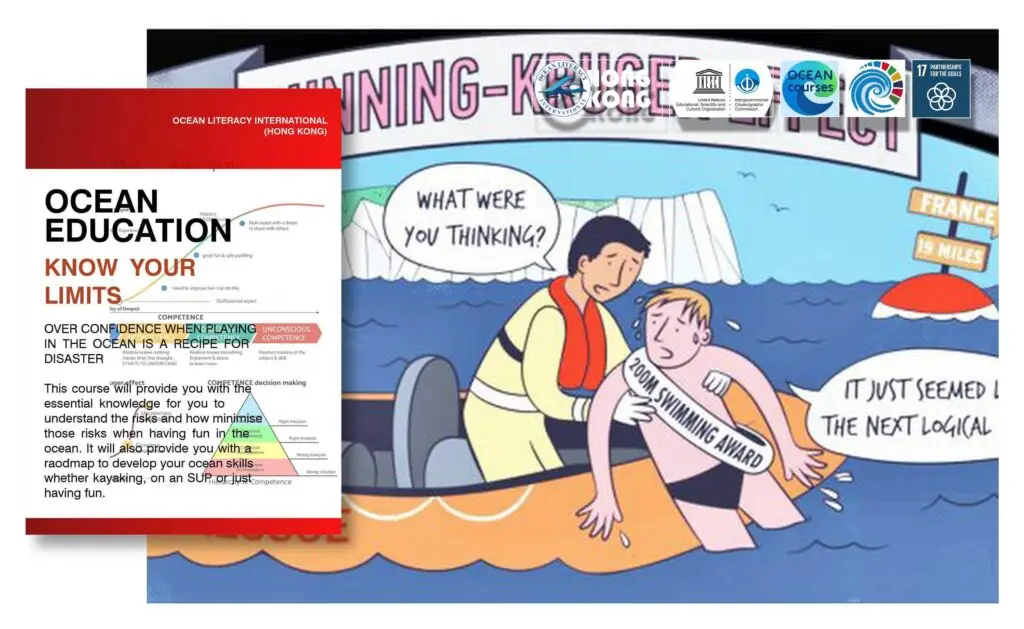Sea Kayak Safety – is not always obvious!
Sea kayaking can be an exhilarating and rewarding activity, but it comes with inherent risks that beginners may not fully appreciate. The Dunning-Kruger effect plays a significant role in how novices perceive and assess these risks, potentially leading to dangerous situations.
Here’s an outline of how this cognitive bias affects judgments, especially for newcomers to sea kayaking:
The Dunning-Kruger Effect in Sea Kayaking
The Dunning-Kruger effect is a cognitive bias where individuals with limited knowledge or expertise in a specific area tend to overestimate their abilities. In the context of sea kayaking, this can manifest in several ways:
Overconfidence in Skills
Novice sea kayakers may overestimate their paddling abilities, navigation skills, and overall competence on the water. This overconfidence can lead to:
- Attempting trips beyond their skill level
- Underestimating the difficulty of certain conditions
- Failing to properly prepare for potential challenges
Underestimation of Risks
Beginners often lack the experience to fully comprehend the dangers associated with sea kayaking. This can result in:
- Neglecting essential safety equipment
- Ignoring weather forecasts or water conditions
- Failing to create a proper float plan or inform others of their route
- Not knowing what conditions to look out for
Resistance to Learning
Due to their inflated sense of competence, novices may be less inclined to:
- Seek proper training or instruction
- Listen to advice from more experienced kayakers
- Invest time in learning about safety protocols and rescue techniques
Specific Dangers Overlooked by Novices
Beginners affected by the Dunning-Kruger effect may fail to recognize or adequately prepare for several key dangers in sea kayaking:
- Hypothermia & Hyperthermia : Underestimating the importance of proper clothing and the effects of cold water immersion or heat and humidity on the human body .
- Changing Weather Conditions: Failing to recognize signs of approaching storms or deteriorating conditions.
- Tides and Currents: Lacking understanding of how these forces can affect navigation, kayak control and paddling difficulty.
- Marine Traffic: Underestimating the risks posed by larger vessels and shipping lanes.
- Capsizing and Self-Rescue: Overestimating their ability to right their kayak and re-enter in open water.
Mitigating the Dunning-Kruger Effect
To counter this cognitive bias and improve safety for novice sea kayakers we are commited to helping beginner paddlers . We encourage:
- Proper Training: Emphasize the importance of formal instruction and safety courses.
- Continuous Learning: Encourage beginners to view sea kayaking as a skill that requires ongoing development and practice.
- A Culture of Safety: Emphasize the importance of always wearing a life jacket, checking weather conditions, and creating a float plan.
- Gradual Progression: All novices to start in calm, protected waters and gradually progress to more challenging conditions as their skills improve.
- Provide Expert Knowledge: Expose beginners to experienced kayakers who can share insights about the complexities and potential dangers of the sport.
Available Courses



